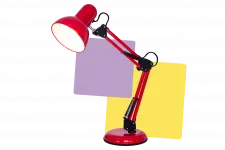Many of us are aware of the basic ‘ISA’ (Income Savings Account). The idea is that individuals may invest cash, up to a capped amount, every year either in a savings account, stocks and shares or even in more innovative peer-to-peer lending schemes.
The capped sum is £20,000 per annum. Returns on this capital are tax-free.
Various schemes have been introduced by the government in an effort to enable first-time buyers to get into the market with mixed success. Help to Buy mortgages being one of the most prominent schemes, allowing buyers of new homes to borrow up to 25% of the home’s value as an equity loan. In tandem with this, the ‘LISA’ has been introduced for younger individuals in the hope that by incentivising saving, young people will be encouraged to build a lump sum, either for the purchase of a home or for other reasons.
The ‘LISA’ may be opened by anyone between the ages of 18 and 39. As with other ISA’s, the annual investment limit is £20,000 per annum and return on the sum invested is tax-free.
The LISA differs from other ISAs in that the government are offering an annual bonus of up to 25% of the annual sum invested, up to £1,000 per annum. The ‘LISA’ can be kept open until the individual’s 50th birthday and, in addition, you will be entitled to a £10,000 bonus if you pay in the maximum £20,000 per annum every year between the ages of 40 and 50.
Your LISA can be used to help you buy a home or as part of your retirement fund. You can also withdraw cash for other reasons, but there will be a charge for this equivalent to *25% of the sum withdrawn, up until the age of 60. An exception to this would be if you were diagnosed with a terminal illness.
It’s worth noting that the bonus is calculated monthly on the sums introduced by the 6th of each month, so to maximise the bonus you’d do well to make sure you time your direct debits well!
*Following HM Treasury’s announcement on the 1st May the government withdrawal charge will be reduced from 25% to 20% for withdrawals between 6 March 2020 and 5 April 2021.
Related articles:
Recent posts

Additional borrowing, also known as a further advance, is when you borrow more money on your existing mortgage for a specific reason agreed with your lender.
Here are five of the most common reasons for additional borrowing.
UK Housing Market Round-Up: 2025
16 days ago

Property search site Zoopla has estimated that the UK housing market will end 2025 with approximately 1.15 million completed sales – 4.5% more than the previous year.
Take a look at the 2025 summary of the UK housing market.
Best UK Mortgage Rates this Week
16 days ago

Here are the lowest fixed mortgage rates of the week, available to first-time buyers, home movers, buy-to-let, and those remortgaging.
Call us for more information: 01628 507477 or email: team@mortgagerequired.com.
Buying in the New Year
17 days ago

If buying your first property, or moving home, is on your to-do list this year, the new year can be a great time to take this big step. In this short blog, we look at what you need to consider as you plan and prepare for your home-buying journey.

Just because the Bank of England decides to reduce the base rate, this doesn't automatically mean that your mortgage rate will go down.
Autumn Budget 2025: A Summary
26 Nov 2025

Chancellor, Rachel Reeves, has delivered the Autumn 2025 budget. We have summarised the government's plans for tax and spending.
Renters' Rights Act
14 Nov 2025

The Renter’s Rights Bill became law at the end of October, which means it has been signed off by the King, and it is now the Renters’ Rights Act. Despite this becoming law, these changes are likely to start changing within the next six months, with the aim of being fully implemented throughout 2026 and into 2027.

A welcome change in school is coming as financial literacy is due to become compulsory in schools in England.
The Government has announced that as part of the new national curriculum, children in primary and secondary education will be required to learn about budgeting, compound interest, managing money, and mortgages.



















